Format, Dates & Attendance
The 70th Annual Conference on Applications of X-ray Analysis, more commonly known as the Denver X-ray Conference or DXC, transitioned to a virtual event due to the continuing COVID-19 pandemic. The week-long conference, held 2-6 August 2021, was organized on an event app that allowed participants to “attend” the meeting on either their PC or mobile device. Each day of conference week, new workshops and sessions premiered. Over 340 registered attendees connected through the app to watch and discuss the pre-recorded video presentations, including virtual exhibits from 19 companies. Attendees joined the conference from all over the world, with 41% participating from outside the USA; an 11% higher international attendance than the traditional physical DXC event.
As a bonus, the entire conference app, including all workshop and session presentations, is available through 1 October 2021.
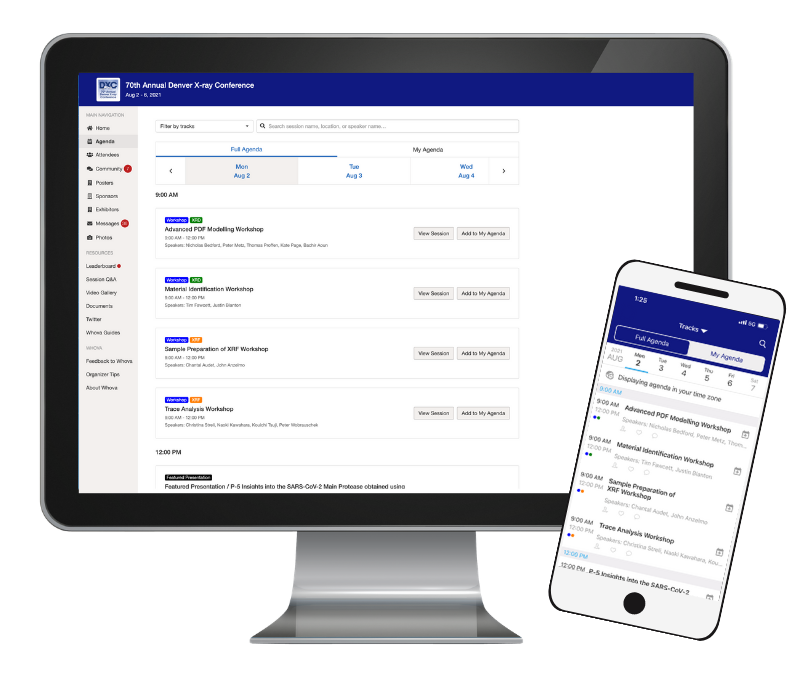
DXC Workshops

Each morning of conference week began with tutorial workshops. A total of 14 workshops, instructed by 43 specialists, provided video presentations and/or PDF handouts to interested attendees. Workshop instructors were available for live Question and Answer discussions during designated time slots and continued to be available for private chats within the app following their workshop. Topics were categorized as either XRD, XRF, or Special Topic, and focused on both beginner and advanced level topics.
Topics included:
- Materials Identification
- Advanced PDF Modelling
- Sample Preparation of XRF
- Trace Analysis
- Intermediate to Advanced XRD
- Micro XRF
- Quantitative Analysis of XRF
- Quantitative Phase Analysis
- EDS Detectors
- Basic XRF
- Layered Structures
- Imaging
- Non-ambient XRD
- Handheld XRF
Featured Presentations
The Featured Presentations substituted the traditional Plenary Session for DXC 2021. One featured presentation premiered each day, Monday through Friday. Monday’s featured talk was presented by Leighton Coates of Oak Ridge National Laboratory, Insights into the SARS-CoV-2 Main Protease Obtained using X-ray and Neutron Diffraction. On Tuesday, Michael Manley of Oak Ridge National Laboratory presented the talk, Energy Materials: Advances Made Watching Atoms Move. Wednesday’s presentation was given by Peter Gehring of NIST Center for Neutron Research (NCNR), Metal Halide Perovskites for Solar Photovoltaic Applications: A Neutron Perspective. On Thursday, we were privileged to host M. Stanley Whittingham of Binghamton University (SUNY), 2019 Nobel Laureate. He shared his work on The Lithium Battery: The Origins to Domination. The Role of Structure and Disorder. Friday’s presentation concluded the featured presentations with, Full-Field X-ray Fluorescence Imaging with Coded Apertures by Anicó Kulow of Néel Institute.
The featured presenters were all available for a one-hour live chat on the day that their presentation premiered on the app. Attendees took advantage of their presence and submitted many questions and comments for discussion.
Insights into the SARS-CoV-2 Main Protease Obtained using X-ray and Neutron Diffraction
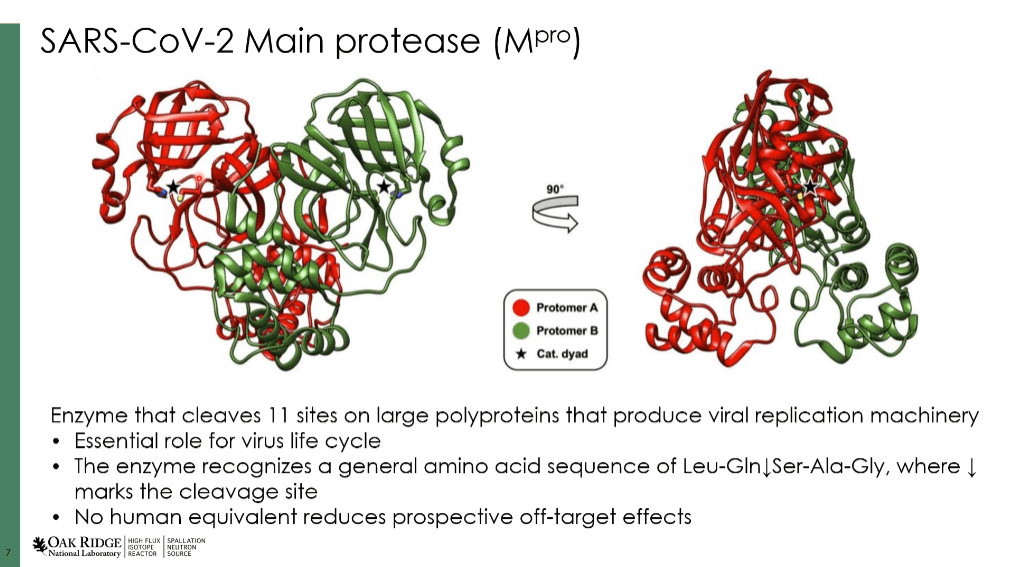
Energy Materials: Advances Made Watching Atoms Move
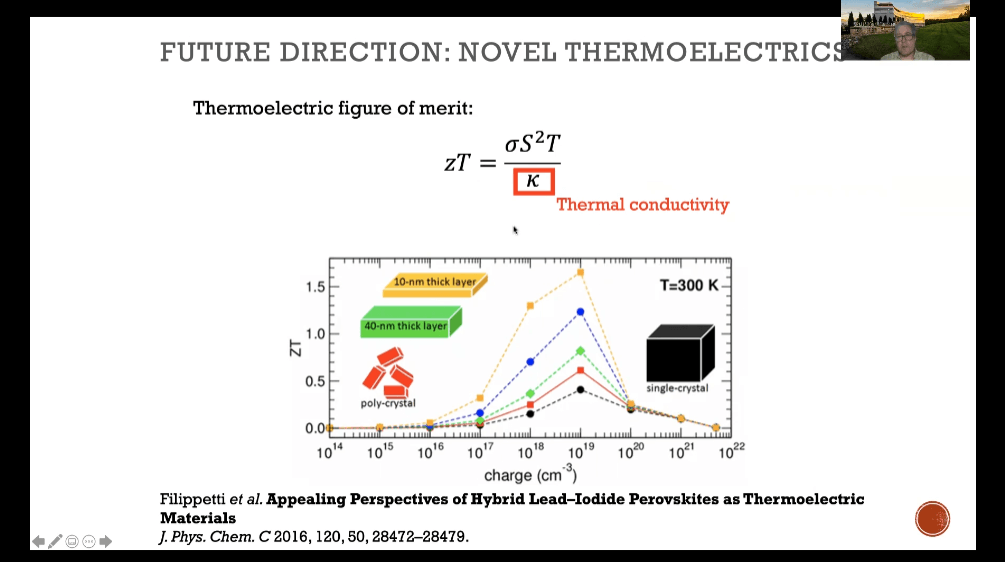
Metal Halide Perovskites for Solar Photovoltaic Applications: A Neutron Perspective
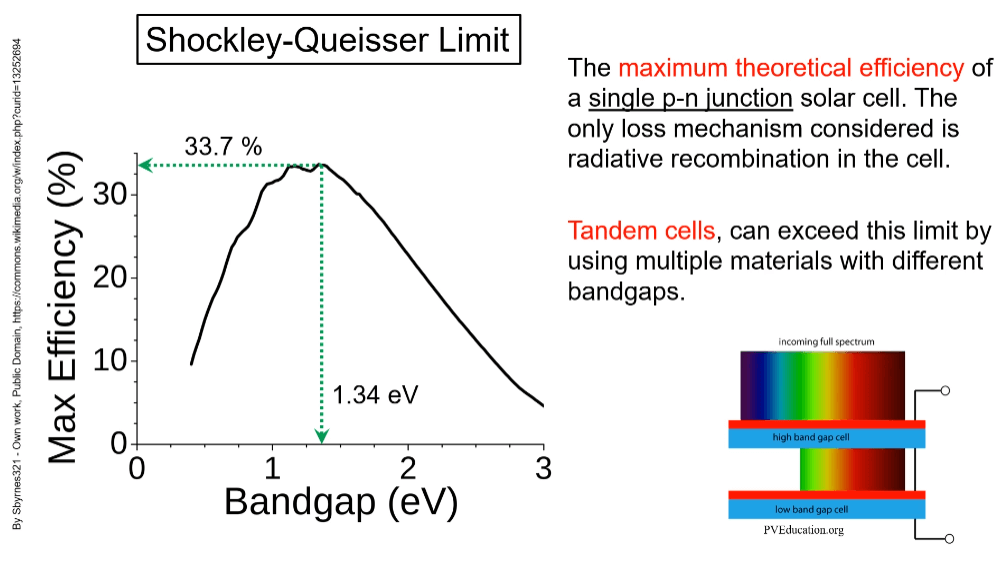
The Lithium Battery: The Origins to Domination. The Role of Structure and Disorder
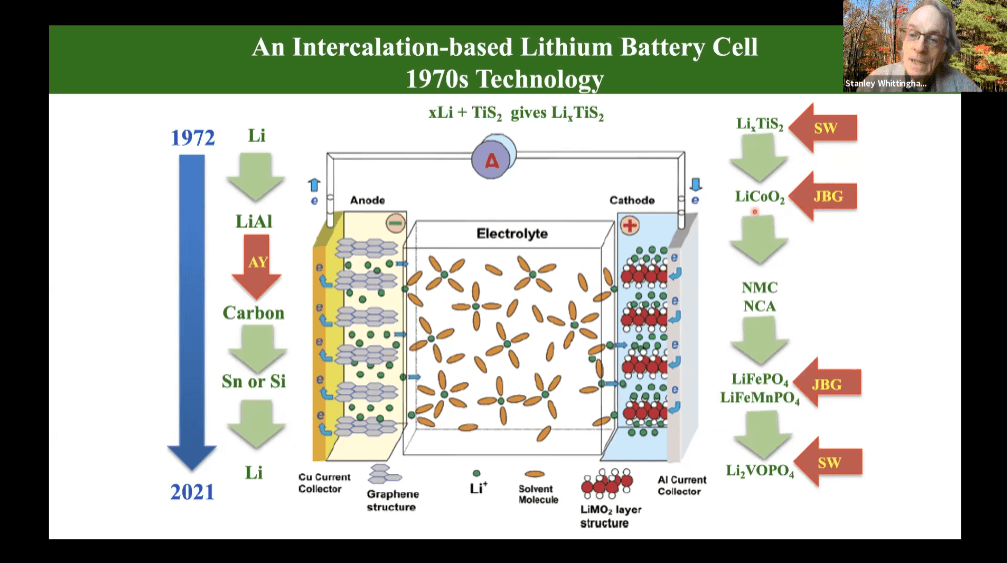
Full-Field X-ray Fluorescence Imaging with Coded Apertures
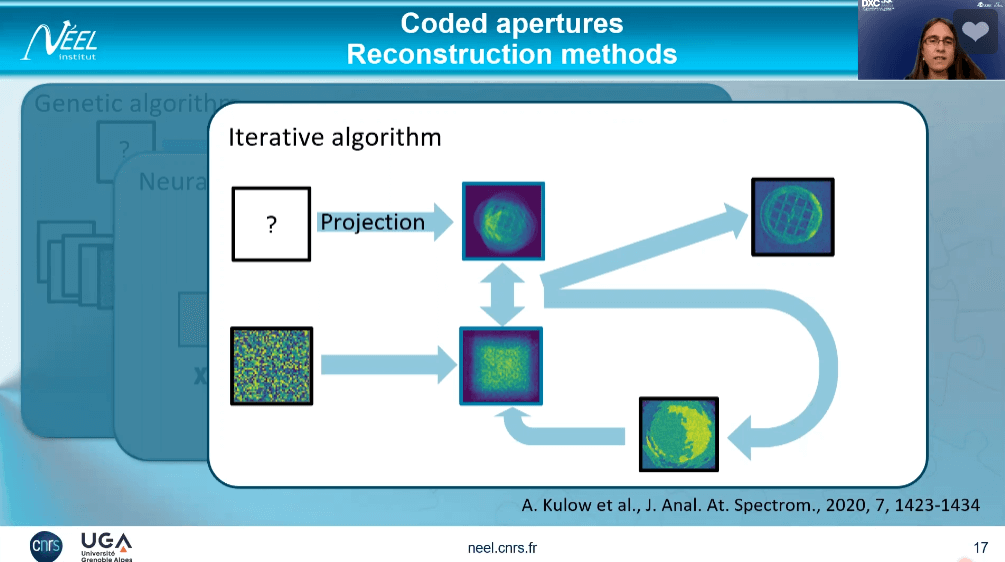
Special Sessions
Each afternoon, new oral sessions were released on the app, and attendees and presenters were given a three-hour window for a live discussion.
Fifteen topics were covered during the special sessions:
- New Developments in XRD & XRF Instrumentation
- Advanced Total Scattering Methods for Complex Material Studies
- Trace Analysis including TXRF
- General XRD
- Stress Analysis
- General XRF
- X-ray Absorption Spectroscopy
- Quantitative Phase Analysis
- Quantitative Analysis of XRF
- Machine Learning Techniques in X-ray Analysis
- Imaging
- Functional Materials
- Non-ambient Analysis
- Industrial Applications of XRD & XRF
- Cultural Heritage
Poster Sessions
Both XRD and XRF Posters were available on the first day of the conference. Attendees were given the full week to view PDF versions of the electronic posters and short video introductions from the poster presenters. A ninety-minute window was designated for live chats between presenters and attendees on the last day of the conference. Best poster awards were chosen; the following presenters were announced as winners (* indicates the presenter):
XRD Poster Winners
XRD Best Poster Awards:
J. Kaduk*, R. Hodge, N. Boaz, North Central College, USA, A. Gindhart, T. Blanton, ICDD, USA, for their work: Crystal Structures of Large-Volume Commercial Pharmaceuticals
F. Kristály*, L. Sipeki, University of Miskolc, Hungary, for their work: Plant Mineralization Characterized by Powder X-ray Diffraction
M.A. Rodriguez*, J. Pillars, N. Valdez, J.J.M. Griego, M.V. Gallegos, J.A. Krukar, A. Polonsky, S. Wolfley, Sandia National Laboratories, USA, for their work: Texture and Strain Analysis of Tungsten Films via Tilt-A-Whirl Methodology
XRD Best Student Poster Award:
L. White*, N.S. Johnson, D.W. Brown, B. Clausen, Los Alamos National Laboratory, USA, M. Matthews, J. Wang, Lawrence Livermore National Laboratory, USA, for their work: Residual Stress and Microstructural Analysis of Laser Powder Bed Fusion Processed Ti-5Al-5V-5Mo-3Cr Alloy Using Synchrotron X-ray Diffraction
XRF Poster Winners
XRF Best Poster Award:
M. Sunder*, M.A. Zaitz, IBM, USA for their work: Utilizing Micro X-ray Fluorescence Mapping Analysis to Quantify Surface vs Bulk Elemental Changes in Brasses
XRF Best Student Poster Award:
G. Goetzke*, J. Baumann, S. Staeck, B. Kanngießer, Technical University Berlin, Germany, G. Hartmann, J. Viefhaus, Helmholtz-Zentrum Berlin, Germany, for their work: Evaluation of Single Photon Events for X-ray Fluorescence Measurements with a Convolutional Neural Network
Exhibits and Sponsorships
Nineteen virtual exhibits were included at the conference, organized in three tiers – Diamond, Ruby, and Sapphire. Each participating vendor was able to display a pre-recorded video, live stream product presentation, and various promotional activities.
Companies providing virtual exhibits were:
Diamond Exhibitors
- Amptek, Inc.
- Anton Paar
- Bruker
- ICDD
- Malvern Panalytical
- Proto Manufacturing, Inc.
- XGLAB
- XIA
- XOS
Ruby Exhibitor
- easyXAFS
Sapphire Exhibitors
- Angstrom, Inc.
- AXO DRESDEN GmbH
- Premier Lab Supply, Inc.
- Raptor Photonics
- RaySpec, Ltd.
- Rigaku Americas Corporation
- STOE Corporation
- Varex Imaging
- VJ X-Ray
Many of the exhibitors supported the conference as sponsors, including Amptek, Inc., Anton Paar, Bruker, ICDD, Malvern Panalytical, Proto Manufacturing, Inc., Rigaku Americas Corporation, XGLAB, XIA, and XOS.
DXC Awards
The 2021 Jenkins Award was presented to Mary Ann Zaitz, Retired, IBM–System and Technology Group, USA. The 2021 Barrett Award was presented to James Kaduk, Poly Crystallography, Inc., USA. The 2021 Birks Award was presented to Lee Grodzins, Professor of Physics, Emeritus, Massachusetts Institute of Technology (MIT), USA.
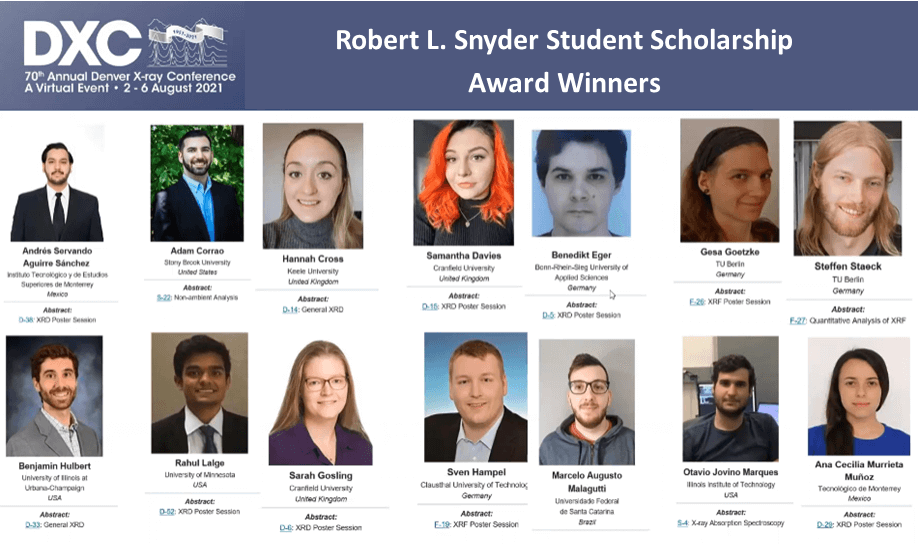
Although the Robert L. Snyder Student Awards are customarily meant to aid student travel to DXC, for the virtual event, the awardees received waived registration to the conference.
The 2021 Robert L. Snyder Student Award winners were:
- Andrés Servando Aguirre Sánchez, Instituto Tecnológico y de Estudios Superiores de Monterrey, Mexico
- Adam Corrao, Stony Brook University, USA
- Hannah Cross, Keele University, United Kingdom
- Samantha Davies, Cranfield University, United Kingdom
- Benedikt Eger, Bonn-Rhein-Sieg University of Applied Sciences, Germany
- Gesa Goetzke, TU Berlin, Germany
- Sarah Gosling, Cranfield University, United Kingdom
- Sven Hampel, Clausthal University of Technology, Germany
- Benjamin Hulbert, University of Illinois at Urbana-Champaign, USA
- Rahul Lalge, University of Minnesota, USA
- Marcelo Augusto Malagutti, Universidade Federal de Santa Catarina, Brazil
- Otavio Jovino Marques, Illinois Institute of Technology, USA
- Ana Cecilia Murrieta Muñoz, Tecnológico de Monterrey, Mexico
- Steffen Staeck, TU Berlin, Germany
DXC's 70th Anniversary
The 2021 conference marks the 70th Anniversary of the Denver X-ray Conference. From its humble beginnings to its current stature, the DXC Mission has always remained the same. As stated by James P. Blackledge in 1959, “We continually strive to present a program which provides a comprehensive survey of the most important X-ray research in progress, to bring together for a few days the leaders in the ever so important field of endeavor, and to publish as quickly as possible a compilation of the discussion for reference by others. In so doing, it is our hope that valuable time of our associates will be saved, for time is the researcher’s most priceless commodity.” To celebrate DXC’s 70th Anniversary, a timeline presentation was made available for our attendees to watch and learn more about the history of the conference. A fun game of “70th Anniversary DXC Trivia” was enjoyed by attendees on Thursday afternoon. Congratulations to Leopoldo Suescun, Universidad de la República – Montevideo – Uruguay, who ranked top in the trivia game.
Virtual DXC Gets Social
Over 3,800 messages and 260 photos were shared within the DXC conference app. Clearly, this close-knit community of materials scientists had important things to share, and a worldwide pandemic was not going to stop them. Although we needed to continue to remain physically distant, the X-ray community found a way to be socially active during the virtual event. The app’s “Community Board” was buzzing with networking opportunities and photo sharing. Attendees immediately started to create boards on topics like Memories of Bob Snyder, Share a Photo of Your Lab, Advice for Young Students, Pets of DXC, and Your LEGO Laboratory, while also sharing important information through article sharing and job postings. Virtual meet-ups were scheduled daily, including a coffee break and 70th Anniversary DXC Quiz Show with the conference organizers.
Thank You
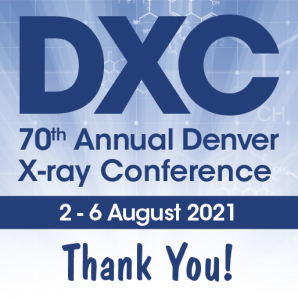
The Conference Services team at ICDD would like to thank the many people who volunteered their time and efforts to organize this virtual event. Members of the DXC Organizing Committee, Session Chairs, Workshop Instructors, Invited and Contributed Speakers, and Exhibitors all played a role in bringing the community together.
Special thanks also to all the attendees who registered for the event and actively involved themselves in the app. Instead of focusing on the many things that could not be done, everyone moved forward with a positive attitude and creativity.
The success of the event is attributed to each and every individual who participated, and we send our genuine thanks to all of you!
Website, Abstracts, and Proceedings
To view the complete DXC Program, including abstracts, please visit the Program page of the conference website. The DXC conference proceedings, Advances in X-ray Analysis (AXA), Volume 65, will be published in the summer of 2022. Select AXA papers will also be published in Powder Diffraction Journal. Please visit the “Resources” page of the ICDD website for free access to manuscripts published in Volumes 40 through 64 of Advances in X-ray Analysis.
2022 Meeting
Although the future is uncertain, DXC organizers are moving forward with plans for a physical conference in 2022 at The Bethesda North Marriott Hotel & Conference Center, Rockville, Maryland, USA from 1 – 5 August. We hope to be back together again in 2022!